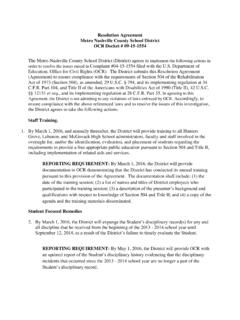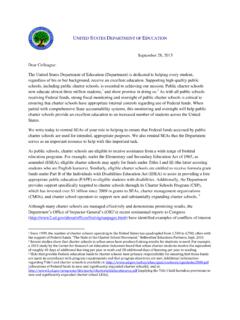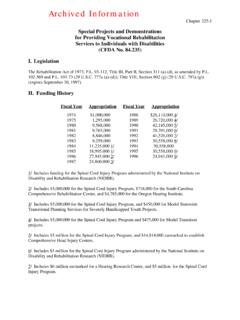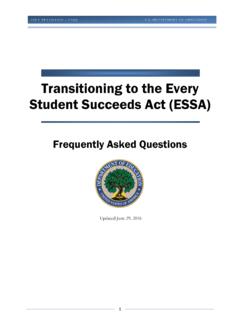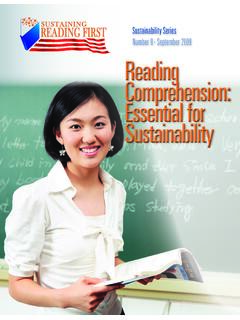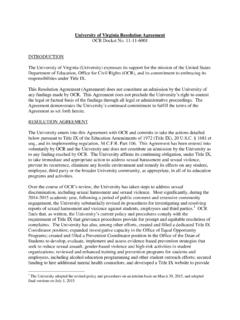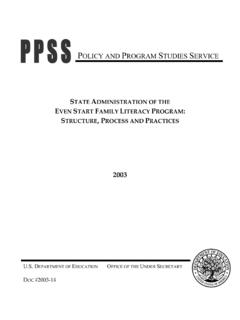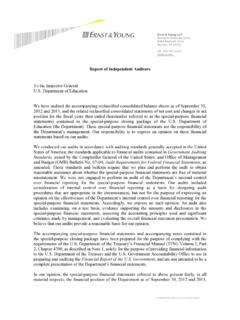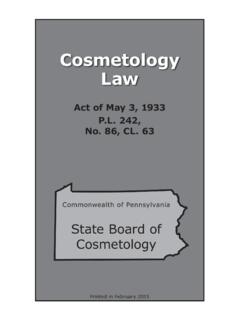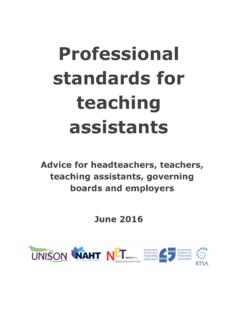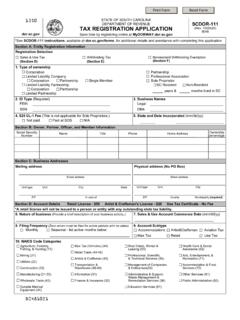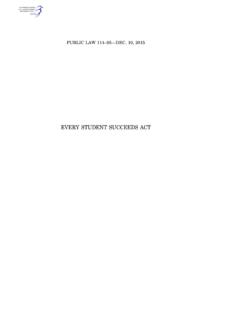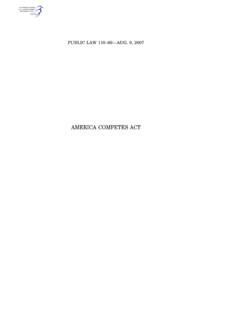Transcription of Sustainability Series Number 6 · September 2009 nain ... - ed
1 SUSTAININGREADING FIRSTS ustainability Series Number 6 September 2009 Engaging StakeholdersIncluding Parents and the Community to Sustain Improved Reading OutcomesSustainability Series Number 6 Including Parents and the Community to Sustain Improved Reading OutcomesSchools seeking improved outcomes usually have one or more champions for change on the inside of the organization, and these leaders can often engage other staff to produce better results in the short term. But these instructional leaders often move to another school , climb the career ladder, or retire.
2 When they do, gains that have been made often quickly fade away. If schools are going to build support for on-going success, they also need advocates for improved program outcomes outside the immediate organization constituents who understand the mission of the school , who share the champions vision and passion for student success, and who have a personal stake in the performance of the school and its students. In this brief, we identify schools external stakeholders and offer ways in which these constituents can be a positive force for helping school staff achieve improved outcomes for all students and sustain them over brief, sixth in a Series addressing key aspects of Sustainability , can help leaders in your school , district, or state plan for active parent and community involvement and sustain the success they have established through the Reading First initiative.
3 Other aspects of sustaining school -wide reading models that are based on scientific research will be addressed in other briefs in this Series . Please check the Reading First Sustainability website at for other titles in this brief was written by Stan Paine of the University of Oregon and Richard McCann of Research for Better Schools. Dr. Paine directs professional development and outreach services to schools and districts to improve academic outcomes for students. Prior to joining the University, Dr. Paine was an elementary school principal for 22 years.
4 Mr. McCann has provided technical assistance in school improvement to state, district, and school leaders in the Mid-Atlantic region for a Number of is the ability of a staff to maintain the core beliefs and values (culture) of a program and use them to guide program adaptations over time while maintaining improved or enhanced outcomes. -adapted from Century and Levy, 2002 Stakeholders and Sustained Outcomes 4 Who are the stakeholders? Why involve stakeholders? What does it take to engage stakeholders?Engaging Stakeholders in Education 6To what extent can parent and community involvement impact student success?
5 Effects of Parent and Community Involvement 8 Find out about the linkage between parent involvement and children s of Partnerships 9 What have others done to foster family and community involvement?How can stakeholders help sustain reading outcomes? 13 Learn what stakeholders can do to support your 15 Additional Resources 16 Sustainability 3 Series Effective programs to engage families and communities embrace a philosophy of partnership. The responsibility for children s educational development is a collaborative enterprise among parents, school staff, and community members.
6 Henderson and Mapp, 2002 Sustainability 4 SERIESWho are the stakeholders?A stakeholder is an individual or group with an interest in the success of an organization in fulfilling its mission delivering intended results and maintaining the viability of its products, services and outcomes over are the stakeholders in the endeavor to improve student outcomes in reading and to sustain those increased levels of achievement? To whom does it matter that more students learn to read well and to succeed in school and that improved outcomes hold up over time?
7 Table 1 identifies key constituencies in the realm of reading outcomes and suggests what members of each group have at stake. Keep in mind that some stakes, of course, are held by more than one constituent and Sustained OutcomesTable 1: Key Educational Constituent Groups and their Stake in Students Reading SuccessConstituent GroupsWhat s at Stake?StudentsPersonal success throughout school , future opportunityParents Pride, success, and opportunity for the students they care aboutSchool staffProfessional efficacy and job satisfactionSchool & district staff Adequate yearly progress, meeting accountability expectationsSchool boardFulfilling the district s mission, media coverage, accountabilityTaxpayersGetting a good return on their tax investment in schoolsBusiness communityAbility to hire graduates with skills needed.
8 Community economics Other community membersCommunity pride and livability, real estate valuesSUSTAINABILITY 5 SERIESWhy involve stakeholders? The distinction between internal and external education stakeholders is important. With respect to a school improvement effort, such as a schoolwide reading model, internal stakeholders clearly have greater capacity to produce positive change in schools, but they don t have all of the power needed to sustain it. Because of factors that can affect organizational performance over time (such as staff attrition, shifting priorities and mission drift ), improved outcomes achieved one year can easily fade the next.
9 For this reason, external stakeholders also have a critical role to play in sustaining improved outcomes. If they are informed of the school s effort to improve reading outcomes, they can help sustain the district s focus over time on mission-oriented change improvement that lies squarely at the heart of the district s mission or purpose thereby moderating the effects of staff turnover, maintaining reading as the top priority, and eliminating mission drift. When the long-term success of a school system is deemed important, we must ask: To whom do the schools belong?
10 And Who has a long-term vested interest in the success of our schools and students? In answering these questions, we quickly find ourselves at the doorstep of our constituents: the families who send their children to our schools, the taxpayers who support the schools, and the businesses who hire our graduates. In this light, external stakeholders can be highly motivated and can become powerful drivers to help achieve and sustain positive change in our does it take to engage stakeholders for improved outcomes?The kind of engagement we are talking about here is different from what both educators and external stakeholders might think of when pondering the notion of parent and community engagement in schools.

